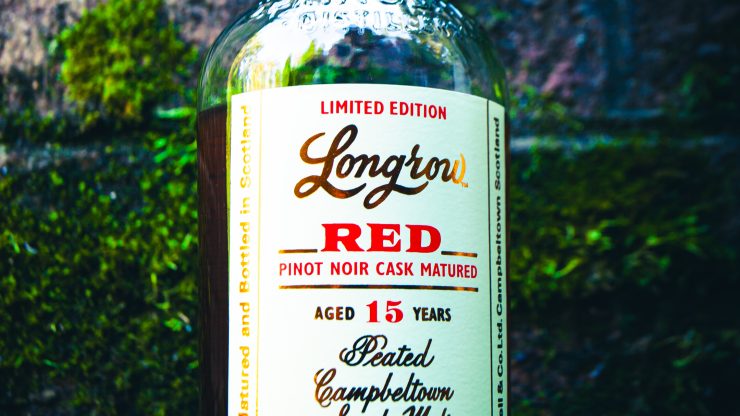Springbank’s Peaty Annual Wine Cask Release
If you ask me which label of Springbank’s I prefer, I’d likely waffle on an answer. Springbank 12 always seems right up there for me, regardless of the cask types in the blend. Hazelburn in bourbon casks is perfection in a bottle. Peated, wine cask releases from Longrow, are usually high up on my list too.
I enjoy tasting them all, more so than accruing a vertical. No one release has made me want to run out and stock up, but some have made me reconsider sharing as much as I have, as selfish as that sounds. That being said, my enjoyment comes from the exploration of the malt and the multitude of cask maturations Springbank employs. That is the fun I find in these annual releases. (As it certainly isn’t in the chase!)
Distillery: Springbank.
Region: Campbeltown, Scotland, UK.
ABV: 51.4%.
Age: 15 Years.
Cask type: 11 Years in bourbon barrels, followed by 4 Years in fresh Pinot Noir barriques.
Price: $170.
Color: 1.8 Old Oak. Natural Color. No chill filtration.

Tasting Notes
Tasted neat in a Glencairn with 15+ minutes of rest. Dilution was added for the second half of the tasting with an additional rest of upwards of an hour. This review encompasses my initial impression to the final glass.
Nose: Rich and fruity nose with distinct and decadent sweet notes of candied plums and strawberries. Like a parbaked almond meal pie crust, the peat comes through as earthy and nutty. Familiar, yet woodsy, baking spices of peppercorns, vanilla bean, and cinnamon bark. The cereals remind me of homemade granola in the best sense: healthy oats, candied orange peel, and prunes. The delicate oak notes are difficult to parse out without a few drops of water. Once the whisky opens up with some dilution, you can smell that sweet tobacco aroma along with a warm leather saddle note. For those sensitive to sulphur, you’ll be pleased to know there’s only a hint of sulfites in this dram.
Palate: I was denying the urge to write amaro for the nose, but after the first sip, it’s unmistakable. Flat cola, orange oil, and green walnuts. Less sweet than the nose, but equally interesting and unique. The fruits are now coming through as fermented, natural wine flavors. Nearly medicinal at times, which water further enhances. Floral, herbal tea with some rose hips, hibiscous, and ginger. As I sip through, the dram becomes more bitter over time. The sweet fruits become stale and herbaceous. Dilution does some heavy lifting and brings out the sweeter nature of the whisky while also elevating the oak.
Finish: Bitter oak, more cola notes, and fully realized herbal tea. It’s incredibly floral, almost to the level of say an ex-bourbon Linkwood. The peat profile follows along with the green, herbal leaning dram. It’s a campfire with green, unseasoned wood. That nutty quality of the peat has gone stale here on the finish. Dilution was preferred allowing more of the grape and wine characters to come out. It’s a shame as it cannot save the overall dry, uninteresting finish for me.
Overall
With the recent Pinot cask Brackla I reviewed last week, I feel as if this is a tendency for this type of cask. It starts wonderfully on the nose, then slowly degrades as I sip through the whisky.
I enjoyed the floral aspects until the finish, where it falls dreadfully flat. Hibiscus, and floral elements, in particular, work in small portions. A light infusion of herbal teas, a cocktail liqueur modifier, and even an ingredient in a latte. It pairs well with a strong base note, which this whisky seemingly lacks for me.
To compensate for that missing element, I recommend pairing your tasting with espresso or a piece of chocolate even. My enjoyment increased exponentially having a stronger complimenting flavor with my dram.
Final Score: 82
